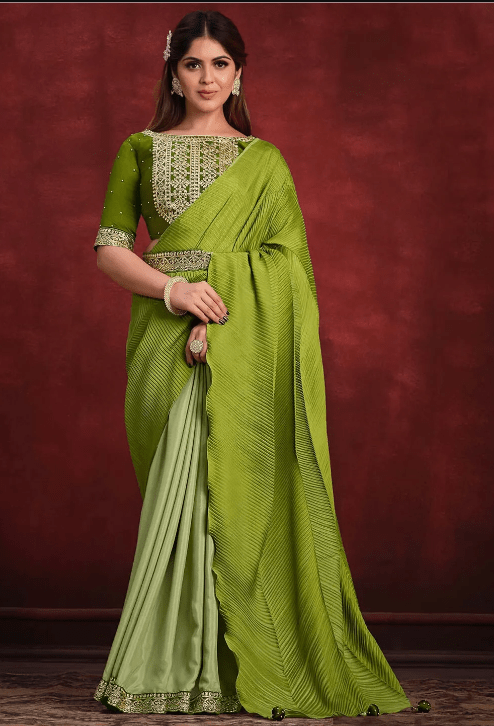In Indian culture, traditional half sarees hold a special place, weaving together history, tradition, and elegance. These garments, known for their mesmerizing beauty, have been a part of the Indian heritage for generations, captivating women of all ages. Let’s delve into the cultural significance of traditional half sarees and explore why they remain a cherished choice among Indian women.
The Versatility of Traditional Half Sarees
Traditional half sarees, or “Pavadai-Davani” or “Langa Voni,” consist of three essential components: a skirt or lehenga, a blouse, and a long, flowing dupatta. This unique ensemble is admired for its versatility, allowing women to embrace different styles while celebrating various occasions.
Regional Diversity
One of the most captivating aspects of traditional half sarees is their regional diversity. These garments are worn with pride across India, each region adding its own cultural flair. Whether it’s the vibrant colors of a Rajasthani half saree or the intricate designs of a South Indian Pattu Pavadai-Davani, each style reflects the uniqueness of its origin.
Elegance in Simplicity
The simple yet elegant designs characterize traditional half sarees. They embrace a timeless charm that transcends fashion trends. These sarees embody grace, making them suitable for women of all ages, from young girls embracing their cultural roots to older women who appreciate the traditional aesthetic.
Cultural Celebrations
Traditional half sarees play a significant role in various cultural celebrations and rituals. For example, young girls in South India wear Pattu Pavadai-Davani during important ceremonies like their first rice-eating ceremony (Annaprashan) or religious festivals. In contrast, North Indian brides often choose exquisite half sarees in rich red and gold for their wedding day, symbolizing love and prosperity.
A Symbol of Transition
Traditional half sarees mark a transitional phase in a young girl’s life. As girls grow into young women, they often transition from wearing simple skirts to adorning these graceful ensembles. This shift symbolizes not only physical growth but also the beginning of a new chapter in their lives, embracing their cultural identity and responsibilities.
The Timeless Appeal of Red
Among the spectrum of colors that traditional half sarees come in, red stands out as a significant choice. Red holds immense cultural significance in India, symbolizing love, passion, and new beginnings. It is no wonder that red half sarees are a popular choice for brides across the country. The combination of red with intricate gold embroidery evokes a sense of opulence and tradition, making it the epitome of bridal elegance.
The Craftsmanship
Traditional half sarees are often adorned with exquisite handwork and embroidery. Skilled artisans spend hours meticulously crafting intricate patterns, from zari work to delicate thread embroidery. The result is a piece of art that not only enhances the garment’s beauty but also preserves the rich tradition of Indian craftsmanship.
Passing Down the Tradition
One of the most heartwarming aspects of traditional half sarees is the practice of passing them down through generations. Many Indian families have a cherished heirloom half saree that has been worn by mothers, grandmothers, and daughters alike. This tradition serves as a poignant reminder of the enduring bond between generations and the importance of preserving cultural heritage.
Traditional half sarees are more than just garments; they are living embodiments of Indian culture and tradition. Their versatility, regional diversity, and timeless elegance make them a cherished choice among women of all ages. Whether worn during cultural celebrations, rituals, or simply to embrace one’s heritage, traditional half sarees continue to be an integral part of the Indian identity, preserving the richness of our cultural heritage for generations to come. As red half sarees symbolize love and prosperity, the tradition of adorning them ensures that the love for our cultural roots and the prosperity of our heritage endure.
